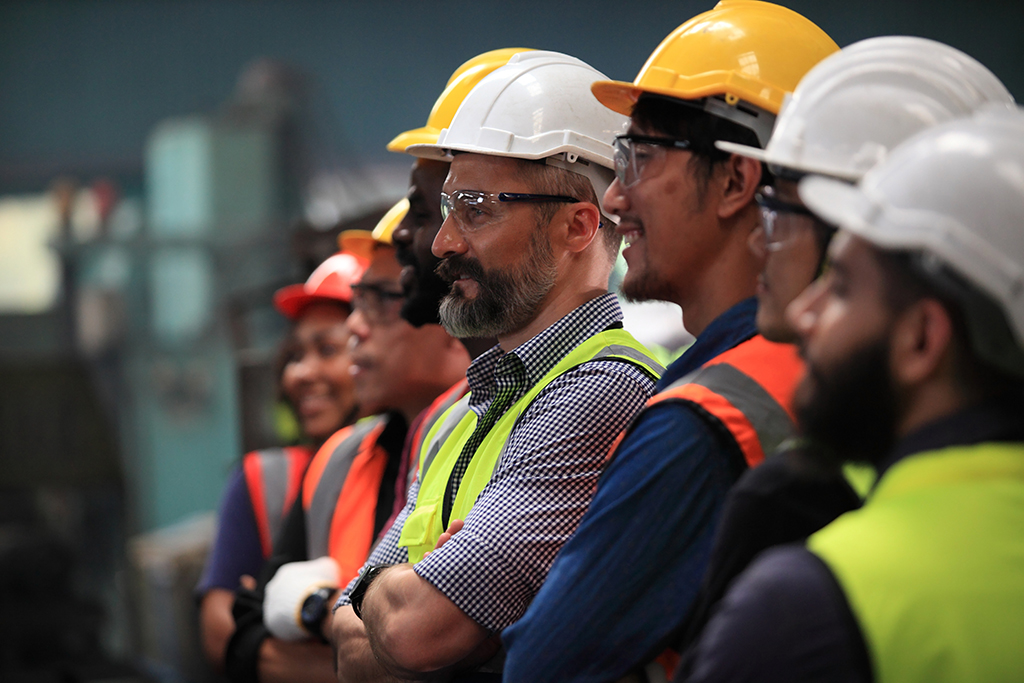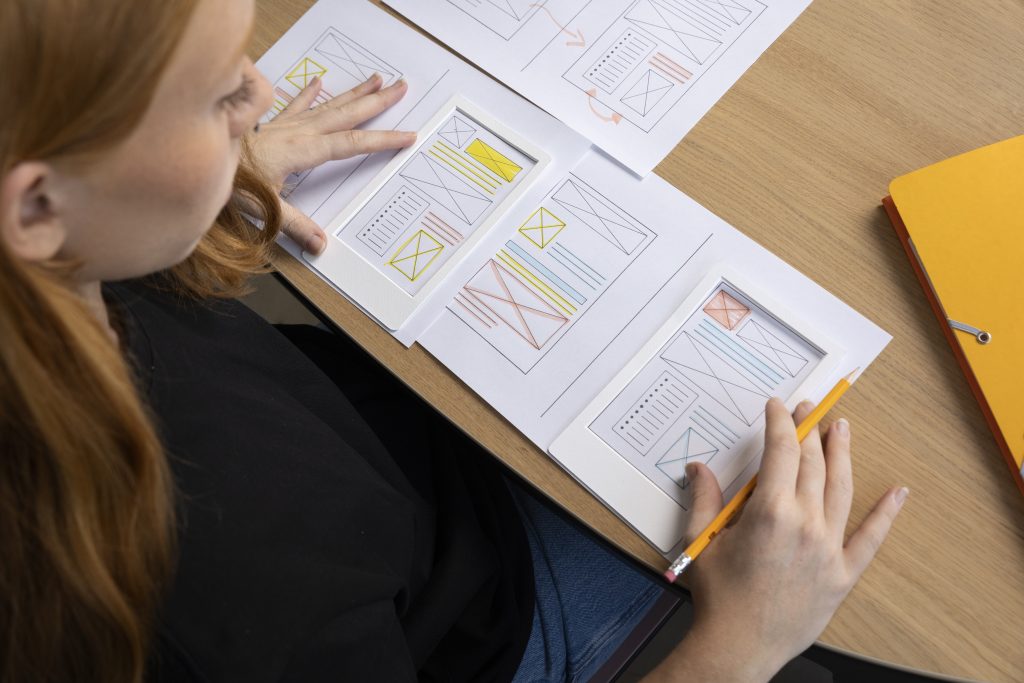In the ever-evolving digital landscape, a website stands as a testament to a brand’s identity. However, creating a site is not just about its visual allure. Balancing aesthetics in website development is a delicate act, ensuring that the design complements functionality. A striking design can undoubtedly captivate and lure visitors. Yet, it’s the website’s user-friendliness and intuitive features that anchor them, prompting prolonged engagement and return visits. It’s like crafting a work of art that’s not only pleasing to the eye but also serves a tangible purpose. So, while aesthetics play a pivotal role, they must harmoniously coexist with utility. Let’s embark on a journey to explore this symbiotic relationship between a site’s design and its functionality, unveiling the secrets to creating a perfect digital experience.
Design with the User in Mind
At the heart of an impactful website lies its unwavering commitment to the user experience. Diving deep into the motivations, challenges, and behaviors of a target audience, we uncover insights that shape the digital landscape. Let’s consider a local business website. Instead of concealing vital details like contact information or services, they shine at the forefront. Such decisions stem from robust research and invaluable user feedback. By doing so, we craft intricate user profiles and design intuitive pathways, guiding users through the website’s framework.
Balancing aesthetics in website development becomes an art when we place the user’s needs center stage. No longer is the site just a visual treat. It transforms into a beacon of value, resonating with its audience. And the reward? A website that not only captivates but also fosters deep connections, driving user loyalty.
Embracing Simplicity: The Minimalist Touch
In today’s fast-paced digital world, simplicity speaks volumes. Balancing aesthetics in website development often hinges on embracing a less-is-more approach. Overly intricate and cluttered designs can overwhelm or even push away potential users. On the other hand, a minimalist design zooms in on the core essence. This allows visitors to engage deeply with the content, free from unnecessary distractions.
Furthermore, using intuitive navigation aids the user journey. Visitors can smoothly navigate, finding what they need without a fuss. Implementing familiar design patterns adds to this ease, creating a sense of familiarity and comfort. When a site strips away needless elements, its primary offerings come into the spotlight.
In essence, by simplifying and streamlining, websites not only become more user-friendly but also boost the overall user perception. This strategic clarity often results in prolonged site visits, fostering deeper engagement and connection with the audience.
Responsiveness is Key
As technology evolves, we see an ever-growing array of devices and screen sizes. It’s crucial to ensure that your website can seamlessly adapt to these variations. In this digital age, a truly responsive website transforms its layout, images, and content to suit any device, be it a desktop, tablet, or smartphone. This adaptability isn’t just about user convenience. Search engines are now giving precedence to mobile-optimized sites. So, by prioritizing a design that fluidly transitions across different devices, you achieve two pivotal goals. Firstly, you cater effectively to user needs, enhancing their browsing experience. Secondly, you elevate your website’s rank, improving its visibility in search results. Balancing aesthetics in website development with this level of responsiveness ensures you stay ahead in the competitive digital landscape. By doing so, you position your website not just as visually appealing, but as an adaptable and user-friendly platform for all.
The Need for Speed: Optimizing Website Performance
Speed and reliability truly stand as the pillars of an outstanding digital experience. When users visit a website, they expect swift page loads and consistent interactions. Prioritizing performance optimization, developers can deliver a seamless experience to visitors. They employ various tools, such as image optimization techniques and streamlined coding practices. Each of these methods holds a singular goal: enhancing user satisfaction.
Moreover, balancing aesthetics in website development with speed can be a challenging feat. Yet, it’s crucial. A website that promptly responds to actions not only impresses the user but also keeps them engaged. In turn, this fosters loyalty, enticing users to revisit and interact more frequently. Ultimately, a well-optimized, responsive website stands a greater chance of retaining its audience and achieving higher conversion rates.
Structure and Clarity: Fine-tuning Content Presentation
Balancing aesthetics in website development is a delicate dance between design and function. One crucial aspect is the organization and presentation of content. When done correctly, it can significantly elevate the user experience. By crafting a distinct content hierarchy, users can swiftly pinpoint the information they’re after.
Headings play a pivotal role, acting as signposts guiding visitors through your content. Meanwhile, bullet points and structured layouts offer clarity, breaking down complex ideas into digestible chunks. This streamlined approach ensures users don’t feel overwhelmed or lost.
Additionally, choosing fonts that are easy on the eyes is essential. They must not only be stylish but also highly readable. Pairing this with the strategic integration of visual elements, like infographics and images, enriches content understanding. Ultimately, when content is clear and well-organized, users are more inclined to delve deeper, exploring all that a site has to offer.
Continuous Improvement through Iterative Design and Feedback
In the world of digital design, the journey towards an impeccable website is ongoing. Balancing aesthetics in website development is a dynamic process, not a one-time task. It demands consistent refinement and adaptation. This approach ensures websites remain vibrant and in tune with user preferences. To keep pace, developers must actively engage in feedback loops, regularly gathering insights from users. This two-way communication ensures the design continually aligns with user expectations.
Furthermore, tools like A/B testing play a pivotal role. These empirical methods empower developers to pinpoint the most effective design components. Instead of relying on assumptions, decisions are data-driven. Hence, by actively listening to user feedback and leveraging data, designers and developers can perpetually polish the website’s design. As a result, the website remains fresh, appeals to a growing audience, and secures lasting user loyalty.
The Intersection of Form and Function: Achieving a Delicate Balance
At the nexus of design and function, an ideal website emerges. This site effortlessly blends captivating aesthetics with impeccable functionality. Balancing aesthetics in website development isn’t a mere trend; it’s a necessity. Through a holistic approach, this balance becomes achievable. Firstly, an unwavering commitment to user experience takes precedence. This dedication leads to adopting a minimalist design, ensuring users aren’t overwhelmed.
Moreover, as technology advances, adaptability across varying devices is critical. Quick loading times further elevate the user’s experience, reducing wait times. A well-organized content structure, supplemented by clear presentation, ensures users find what they need swiftly.
But what truly sets a brand apart is its commitment to continuous improvement. By staying open to feedback and adapting, brands fortify their online presence. In our digital-centric world, a harmoniously designed website mirrors a brand’s core values. As the digital realm evolves, the significance of intertwining design and functionality becomes even more evident. Consequently, brands striving for longevity should prioritize dynamic, user-focused, and aesthetically pleasing websites.






